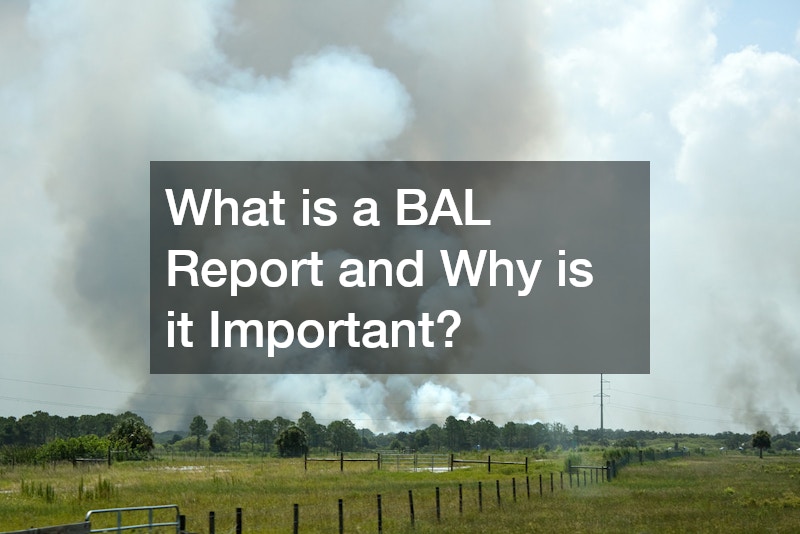As bushfires continue to affect Australian communities, planning and building in bushfire-prone areas has become increasingly complex. One essential document that property owners, developers and builders must understand is the BAL report. This report helps ensure buildings are constructed to withstand bushfire conditions, ultimately protecting lives, property and the broader environment.
Understanding the Bushfire Attack Level (BAL)
The Bushfire Attack Level (BAL) is a rating that determines the potential severity of exposure a building site may face during a bushfire. It considers factors such as the type of vegetation surrounding the property, distance from vegetation, slope of the land and prevailing fire weather conditions.
BAL ratings range from BAL-LOW, indicating minimal risk, to BAL-FZ (Flame Zone), signifying the highest level of risk from direct flame contact and radiant heat.
The purpose of assigning a BAL rating is to inform building design requirements under the Australian Standard AS 3959 – Construction of buildings in bushfire-prone areas. By understanding the level of risk, property owners can implement appropriate construction measures to reduce vulnerability to bushfire damage.
What Is a BAL Report?
A BAL report is a formal assessment that evaluates the bushfire risk of a property and assigns it a BAL rating. The report is typically prepared by a qualified bushfire consultant, town planner or accredited assessor. It involves an on-site inspection and analysis of multiple factors that influence bushfire behaviour in the specific area.
The assessment provides detailed information on the type and proximity of vegetation, the topography and slope of the land, the fire danger index relevant to the region and the distance from the proposed building site to classified vegetation. The resulting BAL rating guides the necessary construction standards that must be applied to the building, including requirements for ember protection, window glazing, roofing materials and external cladding.
Why Is a BAL Report Important?
Ensures Compliance with Building Regulations
In many states and territories, a BAL assessment is a mandatory part of the building approval process for developments in designated bushfire-prone zones. Councils and certifiers use the BAL report to verify whether proposed constructions meet the bushfire protection measures outlined in the relevant planning codes. Without a valid BAL report, a building application may be rejected or delayed, costing time and money. Ensuring compliance from the outset streamlines the approval process and reduces the risk of costly modifications later.
Improves Bushfire Resilience
Australia’s bushfire seasons have become increasingly severe due to climate change. A BAL report enables informed decisions around building design and materials, ensuring that homes and structures are better protected during extreme fire events. Even relatively minor changes recommended in a BAL report—such as installing metal mesh screens or non-combustible decking—can significantly reduce fire exposure and increase survivability.
Protects Lives & Property
Perhaps the most important reason for obtaining a BAL report is safety. By identifying the level of bushfire risk and enforcing construction practices accordingly, lives can be saved during emergencies. Properties that comply with BAL construction standards are more likely to withstand bushfires and provide safe refuge, reducing the risk to occupants, emergency responders and surrounding communities.
Affects Insurance & Property Value
Insurers increasingly consider bushfire risk when underwriting policies. A property with a high BAL rating may attract higher premiums or be subject to stricter policy conditions. A comprehensive BAL report can assist in negotiating appropriate coverage and demonstrate a proactive approach to risk mitigation. Additionally, potential buyers in bushfire-prone areas often seek reassurance that the property meets safety standards. A current BAL report can add value by providing transparency and confirming compliance.
When Do You Need a BAL Report?
You may need a BAL report if you are building a new home or structure in a bushfire-prone area. It is also commonly required if you are undertaking renovations or additions that affect the external footprint of an existing building. In many cases, local councils or planning authorities will request a BAL report as part of a development application. It is worth noting that BAL ratings can change over time, especially after bushfire events or land development that alters vegetation and topography. For this reason, reports should be current and reflect the latest site conditions.
Who Can Prepare a BAL Report?
While property owners can conduct preliminary assessments using online BAL calculators, an official BAL report must be prepared by a qualified professional. Accredited consultants have the expertise to conduct thorough site assessments and apply the relevant fire modelling techniques to deliver accurate and defensible ratings. Choosing an experienced and licensed assessor is essential for ensuring your report is accepted by local councils and building certifiers. Many providers offer fixed-fee services and the cost is often a small investment compared to the potential risks of building without one.
Building Safely Starts with the Right Information
With bushfires posing an ever-present threat across many parts of Australia, it is critical to prioritise safety and resilience in all stages of property development. A BAL report is more than just a regulatory requirement—it is a valuable tool for safeguarding people, homes and assets from the devastating effects of fire.
Whether you’re planning a new home, upgrading an existing structure or buying property in a bushfire-prone region, investing in a BAL report provides peace of mind and ensures you are building with fire safety in mind. By adhering to BAL construction standards, communities can build smarter, safer and more sustainably into the future.
.




